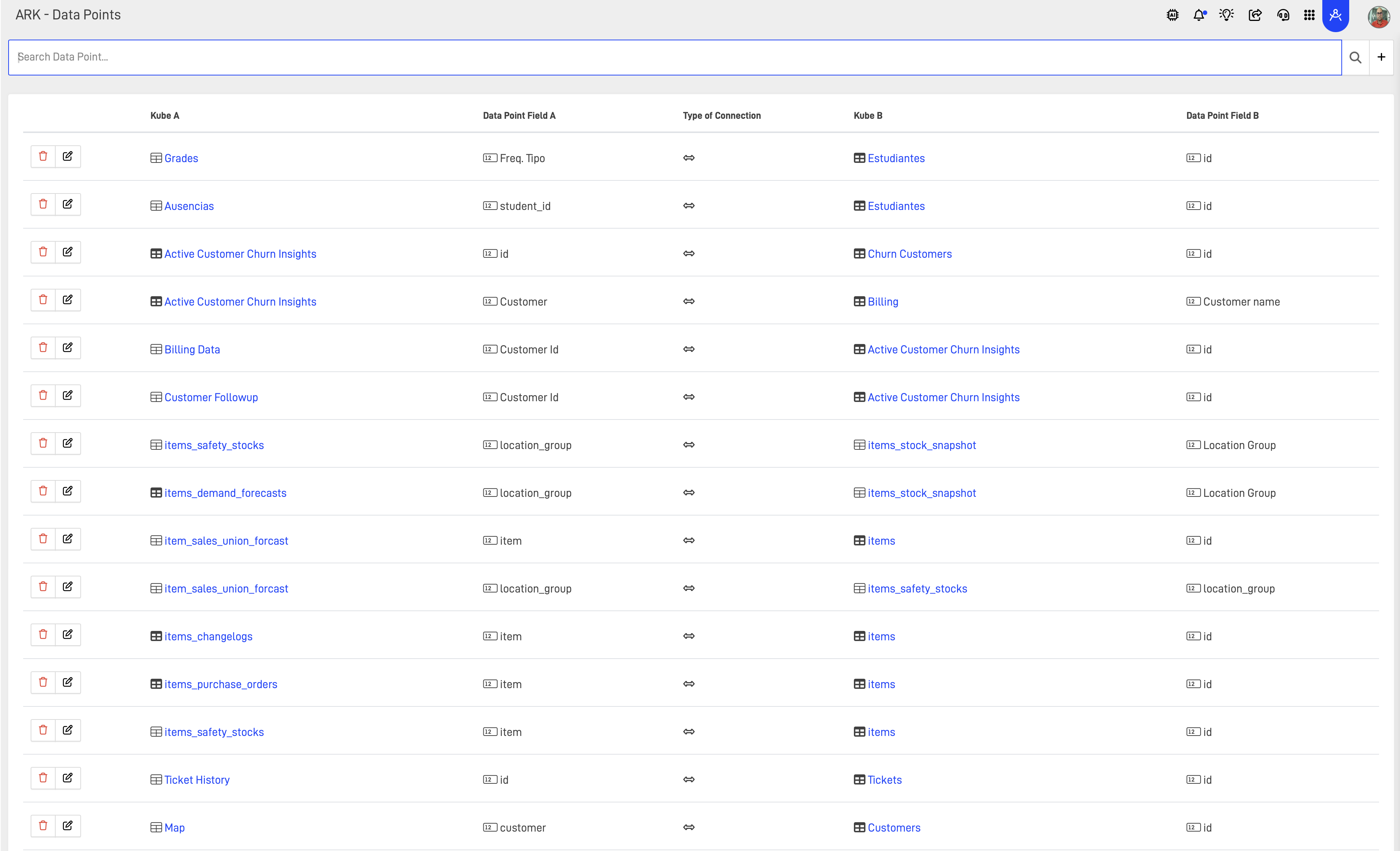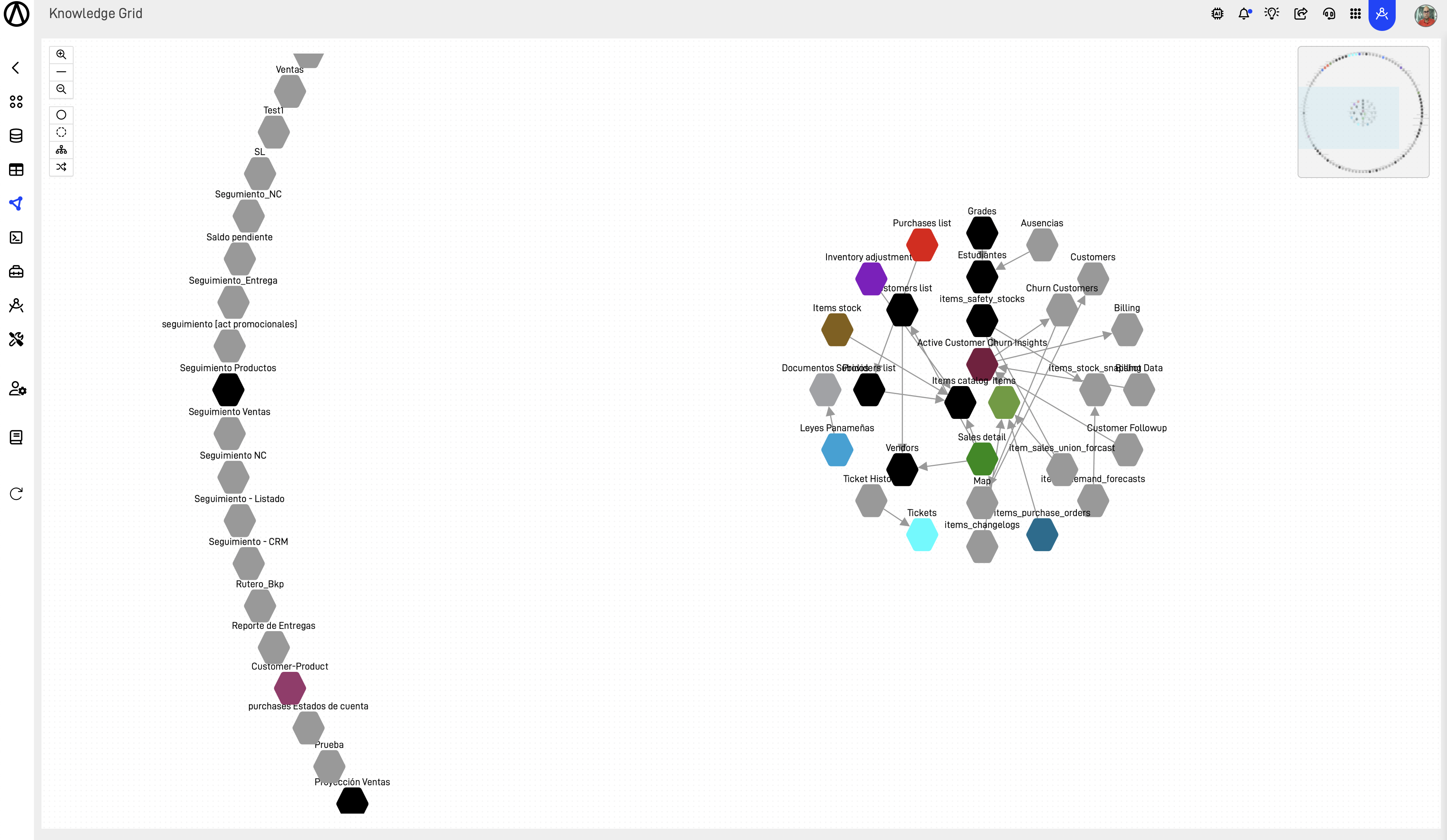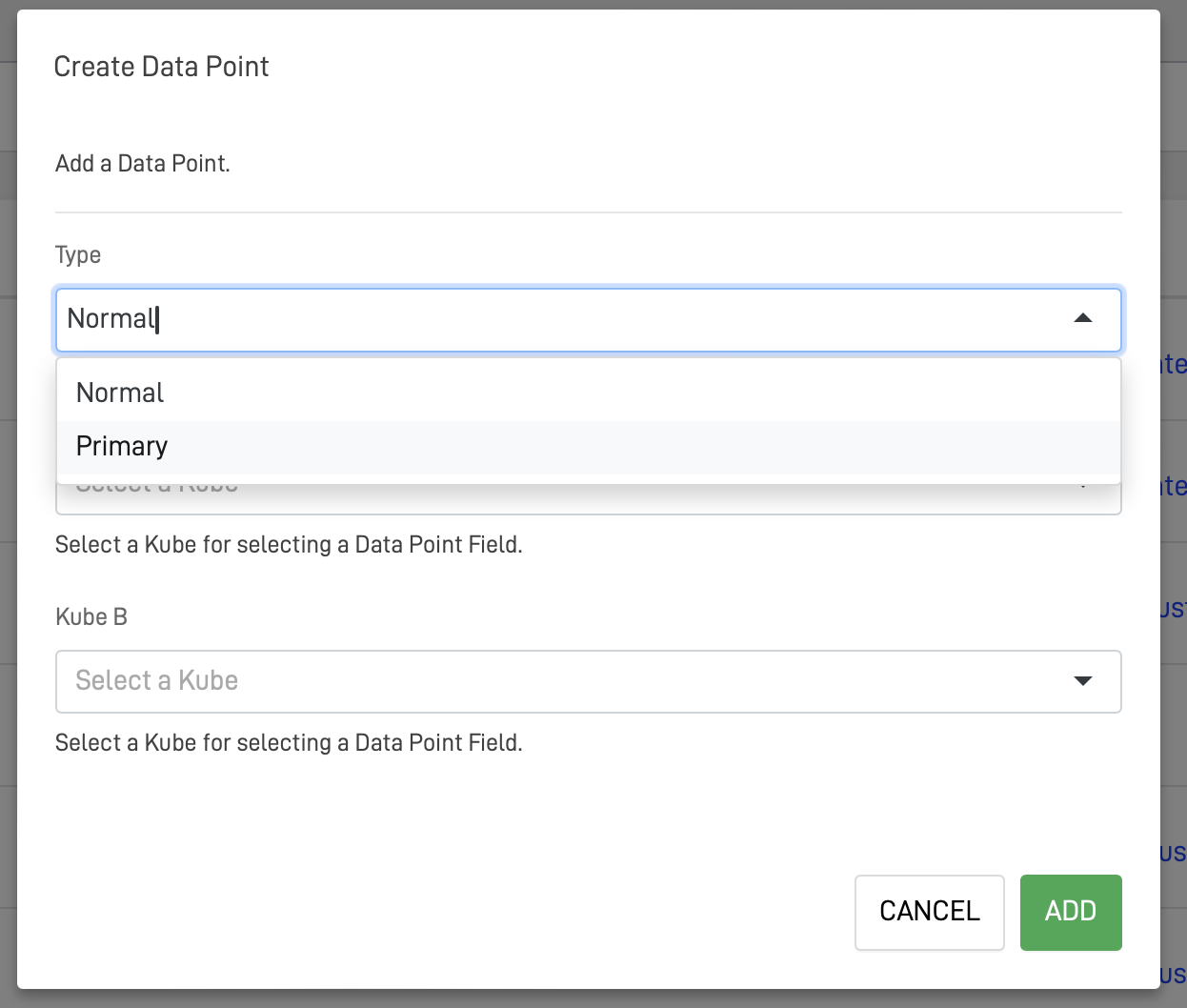Data Governance - Data Relationship
Data relationships in the context of data management and database design are fundamental to structuring and interpreting the vast arrays of data that organizations handle. These relationships help define how data in one table is associated with data in another, impacting everything from data integrity to the efficiency of data retrieval and the effectiveness of data analyses.
In AP you may configure relationship between KG Nodes using the Data Point option under the Knowledge Grid menu.

This relationships can be seen in the Knowledge Grid Graph as the following image:

Types of Data Relationships
The most common types of data relationships found in relational databases are:
-
One-to-One: This relationship exists when one record in a table is linked to only one record in another table. For example, a database containing employee information might link each employee to a specific parking space record in a parking management table. Each employee has one and only one designated parking space, and each parking space is assigned to only one employee.
-
One-to-Many: This is the most common relationship, where a record in one table can relate to multiple records in another table. Consider a business with a database containing a table for employees and another for department assignments. A single department might have many employees, but each employee is assigned to just one department.
-
Many-to-Many: In this relationship, multiple records in one table can relate to multiple records in another table. For example, in a university database, a student might register for multiple courses, and each course might have multiple students enrolled. This relationship typically requires a junction table to manage the associations between the two entities effectively.
At AP you me configure two types of relationships, a primary and a normal relationship. Primary are used for better understanding of node relationships and other sub systems configurations for understanding the way the Knowledge Grid is configured.

Importance of Data Relationships
Understanding and managing data relationships are crucial for several reasons:
-
Data Integrity: Relationships help maintain data accuracy and consistency through referential integrity constraints. For example, foreign keys ensure that a record relating to another cannot exist without the corresponding record in the linked table.
-
Query Efficiency: Properly defined relationships allow more efficient data queries. Database management systems can optimize query performance by understanding how tables relate and where to look for linked data.
-
Data Analysis: Relationships are vital for complex data analyses and reports. They enable the joining of tables to provide comprehensive insights that consider multiple dimensions of the data, such as combining customer, order, and product data to analyze purchasing patterns.
-
Database Normalization: Relationships play a key role in database normalization, a process designed to reduce redundancy and improve data integrity by organizing tables according to relationships and dependencies.
Challenges in Managing Data Relationships
Despite their importance, managing data relationships comes with challenges:
-
Complexity in Design: Designing a database that effectively models all necessary relationships without excessive complexity or redundancy requires careful planning and expertise.
-
Performance Issues: As the number of relationships and the size of the data grow, maintaining performance becomes challenging. Overly complex joins or large transaction volumes can slow down query response times.
-
Maintenance Overhead: Relationships can create dependencies that complicate updates, deletions, and insertions. For example, deleting a record that acts as a foreign key in another table might require cascading deletions or updates, adding overhead and potential for errors.
In summary, data relationships are a cornerstone of database design and data management, essential for maintaining data integrity, enabling efficient queries, and supporting complex analyses. However, they require thoughtful implementation and ongoing management to balance benefits against potential complexity and performance costs.
Updated over 1 year ago
